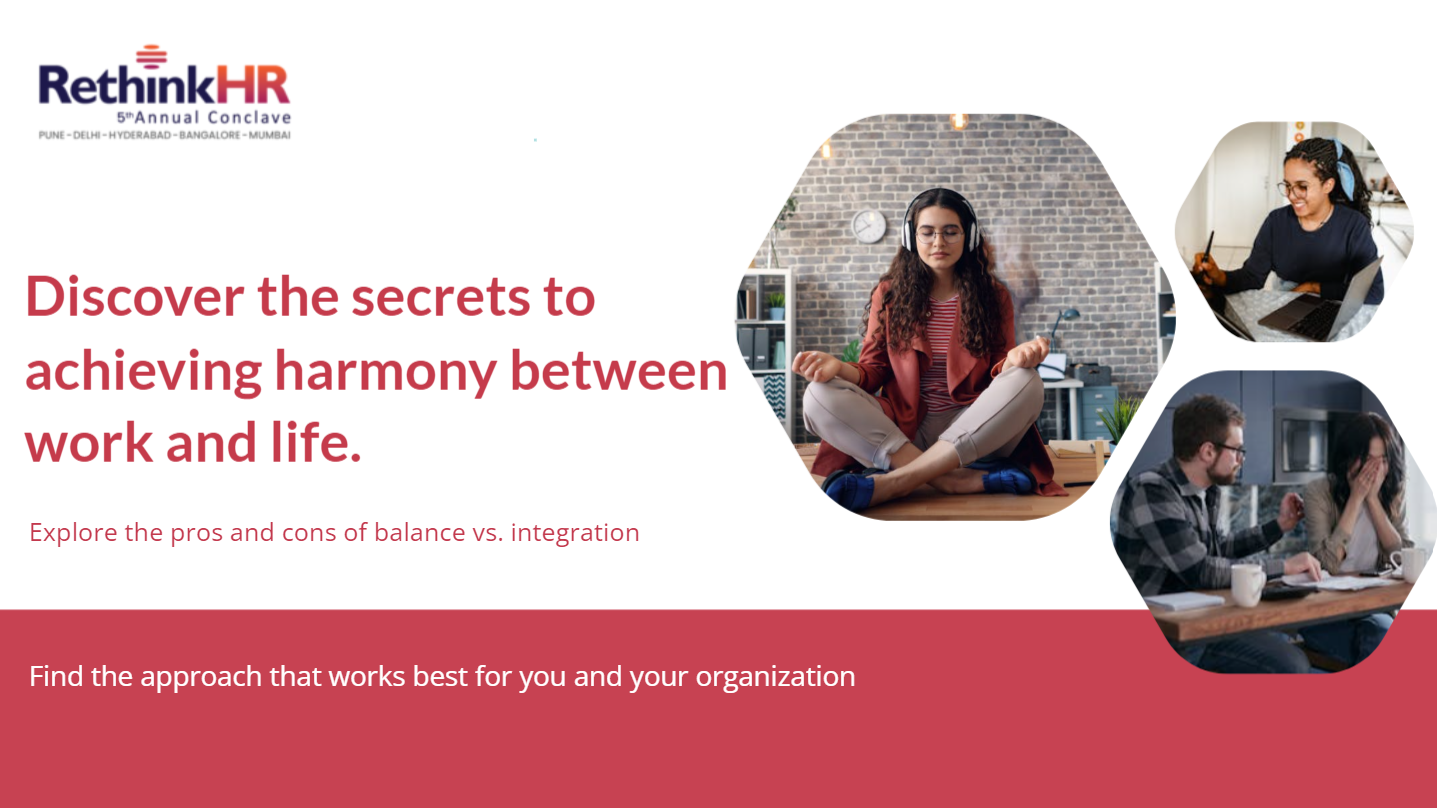In today’s fast-paced world, the conversation around work-life balance and work-life integration has become increasingly relevant, especially for HR professionals and CHROs navigating the complexities of modern workplaces. As organizations strive to create environments that support their employees’ well-being, understanding the nuances between work-life balance and work-life integration is crucial.
The Traditional View of Work-Life Balance
Historically, work-life balance has been viewed as a clear separation between professional responsibilities and personal life. The idea is simple: allocate specific time for work and personal activities, ensuring that neither encroaches upon the other. Many organizations have implemented policies to promote this balance, such as flexible working hours, remote work options, and wellness programs. For instance, Tata Consultancy Services (TCS) has been a pioneer in promoting work-life balance through its “30 by 30” initiative, which encourages employees to take at least 30 days of leave every three years. This initiative not only emphasizes the importance of taking time off but also helps employees recharge and return to work with renewed energy.

The Evolving Perspective of Work-Life Integration
However, as the lines between work and personal life have blurred—especially during the COVID-19 pandemic—the concept of work-life integration has gained traction. Work-life integration focuses on harmonizing professional and personal responsibilities, allowing employees to manage their time more fluidly. This approach acknowledges that work and life are interconnected, and finding ways to blend the two can lead to increased satisfaction and productivity. Consider the example of Infosys, which has embraced work-life integration by offering flexible work arrangements and encouraging employees to manage their schedules based on personal commitments. This flexibility allows employees to attend to family needs while still meeting work obligations, ultimately leading to higher job satisfaction and lower turnover rates.
The Debate: Which Approach is Right?
So, which approach is better? The answer largely depends on the individual and the organizational culture. Some employees thrive in a structured environment where clear boundaries exist, while others prefer the flexibility that work-life integration provides. As Sandeep Chaudhary, CHRO of HCL Technologies, aptly puts it, “The key is to understand the unique needs of your workforce. A one-size-fits-all approach will not work. We must listen to our employees and create policies that reflect their preferences.”
Finding the Right Balance of work-life balance and work-life integration
To strike the right balance between work-life balance and work-life integration, HR leaders must consider several factors:
- Understand Employee Needs: Conduct surveys or focus groups to gather insights on employee preferences regarding work-life balance and integration. This data can inform policies that cater to the diverse needs of the workforce.
- Promote Flexibility: Encourage flexible working hours and remote work options to allow employees to manage their time effectively. This flexibility can lead to increased productivity and job satisfaction.
- Foster Open Communication: Create a culture of transparency where employees feel comfortable discussing their needs and challenges. Regular check-ins can help identify potential issues before they escalate.
- Implement Technology Solutions: Leverage technology to facilitate collaboration and communication among remote teams. Tools like Slack, Microsoft Teams, and Zoom can help maintain connectivity while allowing employees to manage their time effectively.
- Encourage Time Off: Promote the importance of taking breaks and time off to recharge. Organizations can implement policies that encourage employees to utilize their vacation days and mental health resources.
Real-World Examples
– Wipro has implemented a hybrid work model that allows employees to choose their work environment based on their preferences and responsibilities. This model has led to increased employee satisfaction and retention rates.
– Cognizant has introduced a “Flexibility at Work” policy, enabling employees to design their work schedules around personal commitments. This initiative has resulted in a more engaged workforce and improved performance metrics.
The Role of HR in Shaping the Future
As HR professionals, it is essential to lead the charge in redefining workplace policies to accommodate the evolving needs of employees. By understanding the intricacies of work-life balance and work-life integration, HR leaders can create an environment that fosters both productivity and well-being. Moreover, as organizations prepare for the HR Talent Acquisition Event and Human Resources Conferences 2024, It is crucial to incorporate discussions around work-life strategies into these platforms. Sponsorship opportunities at such events can provide a platform for sharing best practices and innovative approaches to employee engagement.
A Path Forward
In conclusion, the debate between work-life balance and work-life integration is not about choosing one over the other; rather, it is about finding the right approach for your organization and its employees. By fostering a culture that values flexibility, open communication, and employee well-being, organizations can transform the way work is perceived and experienced. As we move forward, let us remember that the ultimate goal is to create a workplace where employees feel empowered to thrive both personally and professionally. By embracing the principles of work-life integration while respecting the need for balance, HR leaders can pave the way for a more engaged, productive, and satisfied workforce. In the words of Rohit Thakur, CHRO of Accenture India, “The future of work is not just about where we work, but how we work. It’s about creating an environment where employees can bring their whole selves to work, and that includes their personal lives.”

